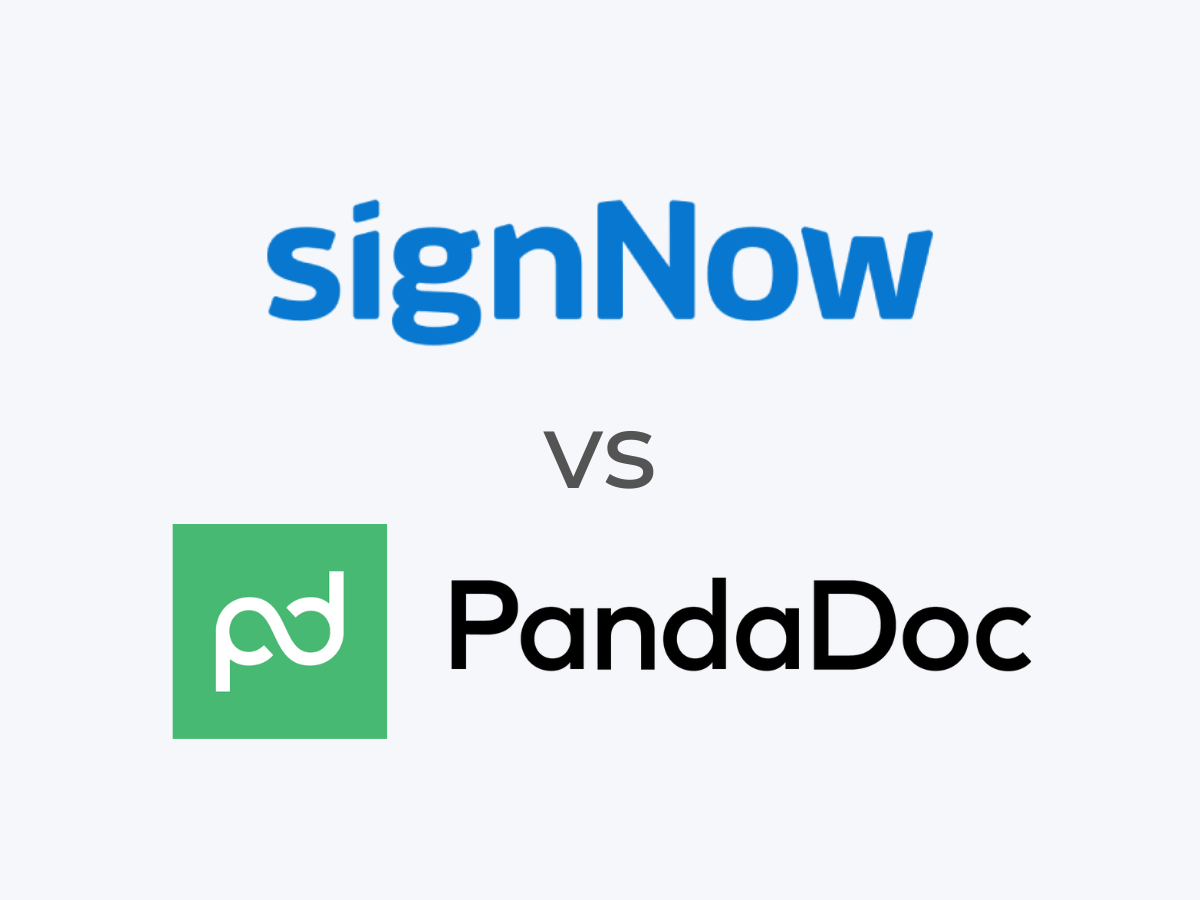Digitally signing documents has now become the norm for businesses of all sizes. But this process involves much more than simply obtaining the signature. Many businesses need additional features to make their document management workflow as efficient as possible. signNow and PandaDoc are two popular solutions for electronic signature and document management.
signNow is a cloud-based electronic signature service for small and medium-sized businesses that allows companies and individuals to securely sign contracts or electronic documents. PandaDoc, on the other hand, is designed to create, sign, and track documents and manage proposals. Designed for speed and ease of use, PandaDoc allows companies or individuals to quickly create and share documents that need to be signed.
1
I press
Employees by company size
Micro (0-49), Small (50-249), Medium (250-999), Large (1000-4999), Business (5000+)
Any size of company
Any size of company
Characteristics
Analytics/Reporting, API, Approvals/Review and more
signNow vs PandaDoc: comparison chart
Although PandaDoc and signNow share many electronic document signing features, their use cases differ. signNow focuses more on organizations that need an overall document workflow strategy that can work with a variety of documents, including legal and other critical areas, while PandaDoc offers sales-focused document tools and workflows.
| Characteristic | sign now | PandaDoc |
|---|---|---|
| Legal electronic signature | Yeah | Yeah |
| Document storage | Yeah | Yeah |
| Custom brand | Yeah | Yeah |
| Document templates | Yeah | Yeah |
| API Integrations | Yeah | Yeah |
| starting price | $8 per user per month | $19 per user per month |
| For more information |
signNow and PandaDoc pricing plans
Both services are offered as a subscription that is billed monthly on a per-user rate. signNow has the lowest cost, with its Basic plan at $8 per month compared to $19 for PandaDoc's lowest tier.
The most advanced Business level plan is priced at $15 for signNow and $49 for PandaDoc.
One major difference is that PandaDoc offers a free tier with limited features but unlimited documents. signNow does not offer a free tier plan, but does offer a seven-day free trial; no credit card needed for the free trial.
| Price level | sign now | PandaDoc |
|---|---|---|
| Free Trial | 7 days | 14 days |
| Free plan | No | Yes. Unlimited documents with restricted features |
| Basic/Essential Plan | $8 per user per month | $19 per user per month |
| Business plan | $15 per user per month | $49 per user per month |
Feature Comparison: PandaDoc vs signNow
Legal electronic signature
signNow's approach to legal electronic signatures leans toward broad compatibility and ease of use across many document types, making it highly adaptable to any business need (Figure A). PandaDoc also offers legally binding signatures, but integrates advanced sales-focused functionality, such as document payment options, which signNow does not directly support.
Document storage
signNow provides a simple and secure document storage system with a strong focus on accessibility and organization. PandaDoc takes a slightly different approach to document storage by integrating advanced tracking and analytics to provide insight into how recipients interact with documents (Figure B).

PREMIUM: Companies may want to consider a cloud data storage policy for their documents.
Custom brand
Both platforms offer custom branding, but signNow's implementation is particularly easy to use, allowing for quick and easy brand alignment across documents without extensive setup, as well as creating organization within the platform (Figure C). PandaDoc also offers custom branding, and its customization options within its branding features allow for detailed branding customization including custom logos, buttons, colors, and document themes.

Document templates
signNow offers a wide variety of templates suitable for numerous industries, making it exceptionally versatile. PandaDoc's customization capabilities shine once again, offering highly customizable templates across many categories that include interactive elements like pricing tables and videos, specifically targeted at engaging sales documents (Figure D).

SignNow pros and cons
Advantages
- Easy to configure fields.
- Easy use of mobile or laptop.
- Integrates with most CRMs.
Cons
- Needs more variety of templates.
- The API could be more fluid.
- Editing templates can be complicated.
Pros and cons of PandaDoc
Advantages
- Reduces contract errors.
- Improves sales review accuracy.
- It has an easy to use interface.
Cons
- You need offline functionality.
- Limited reporting options.
- Occasional editing errors.
Is SignNow or PandaDoc better for my business?
While signNow and PandaDoc offer basic e-signature features, the differences come down to what your specific business focuses on. signNow is a great solution for businesses that need contracts and other similar business documents signed regularly. On the other hand, PandaDoc shines in a sales environment, where the company primarily sends sales documents to customers to close deals.
SEE: Are you considering signing now? See how signNow compares to Citrix RightSignature.
For organizations that need a comprehensive yet simple e-signature solution, signNow is worth considering. As for organizations that need to streamline their sales workflows and improve customer interactions with documents, PandaDoc cannot be ignored.
Ultimately, the question you should ask yourself is whether you prioritize overall document management or increasing sales document efficiency.
Review methodology
To provide this review, we examined the features that PandaDoc and signNow offer and tested the two tools to see if they live up to their descriptions in the official documentation. We then compared how the tools addressed their shared features and compared our findings to reviews from verified users to understand the experiences they got from the products. This helped us understand the strengths and weaknesses of the tools. Finally, we compare their prices to determine which tool is more cost-effective.












